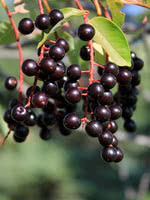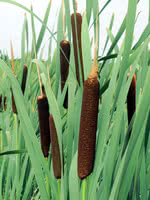Mon-Fri 9am - 5pm Mountain time
Western Chokecherry vs Common Cattail
Prunus virginiana var. demissa
Typha latifolia
SOLD OUT
CUSTOM GROW
Western Chokecherry is a shrub or small tree commonly used for farmstead and field windbreaks.
It produces white flowers in the spring and edible dark purple fruit that matures between September and October. Its cherries are great for making for making jams, jellies or wine, but are not very palatable for raw eating.
Cattail is found all across North America, growing next to water. Like other waterside plants, Cattail provides erosion control and forage for animals.
It is suitable for land reclamation. Cattail is able to tolerate cold weather and occasional flooding.
Western Chokecherry Quick Facts
Common Cattail Quick Facts
Toxicity: toxic to horses, cattle, etc.)

